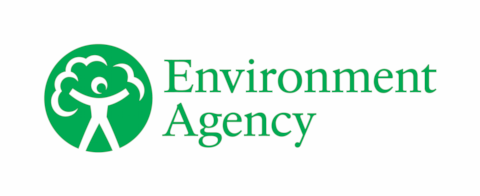South-east England water situation report: August 2025 summary
Updated 12 September 2025
Applies to England
1. Summary
The very hot and dry weather returned in August until the end of the month when the high pressure was replaced by frontal rainfall from the south west. The south-east received 48% of the long term average (LTA) rainfall for August. There was widespread rainfall from 27 to 30 August, with particularly high daily rainfall totals recorded on 28 August. The soil moisture deficits (SMDs) rose steadily up to 26 August then dropped slightly in response to the rainfall at the end of the month. The SMDs remained significantly above the LTA for the end of August and there was negligible recharge during the month.
The seasonal decline of the flow in the rivers continued until the rainfall at the end of the month. Despite how much rainfall fell, the response of all rivers was muted as the catchments absorbed the rainfall. Only 4 fluvial flood alerts were issued during August. The expected steady decline of groundwater levels for this time of year continued during the month with no response to the rainfall. Hosepipe bans have been issued in parts of the south-east of England supplied by Thames Water and South East Water to preserve stocks and manage demand.
2. Rainfall
The very hot and dry weather returned in August until the end of the month when the high pressure was replaced by frontal rainfall from the south west. The south-east received 48% of the LTA rainfall for August. Solent and South Downs (SSD) received 61% and Kent and South London (KSL) received 37% of the LTA rainfall for the month.
There was widespread rainfall from 27 to 30 August, with particularly high daily rainfall totals recorded on 28 August. The highest totals were about 58mm, measured at both Westergate, Solent and South Downs (SSD) and Pease Pottage (KSL). The 28 August represented the wettest day for all 4 areas. The rainfall recorded between 27 and 30 August accounted for 84% of the rainfall which fell across the south-east. There was an average of 23 ‘dry’ days when less than 0.2mm daily rainfall was recorded during the month.
It was the driest August since 2003 for the south-east, KSL and a small number of areal units, including:
- Wey Greensand
- Cherwell (both Thames, THM)
- North London (Hertfordshire and North London, HNL)
- Cuckmere (SSD)
Most of the remaining areal units had the driest August since 2022, particularly those in THM and SSD.
3. Soil moisture deficit and recharge
The SMDs rose steadily up to 26 August then dropped slightly in response to the rainfall at the end of the month. However, the SMDs ended significantly above the LTA for August. Matching the rainfall, the end of month SMDs for a number of the areal units were the highest since August 2022, including Chilterns West (THM), Chilterns East, Lee Chalk (both HNL), North Downs South London (KSL) and East Hampshire Chalk (SSD). As would be expected with such high SMDs, there was negligible recharge during August.
4. River flows
The seasonal decline of the flow in the rivers continued until the rainfall at the end of the month. Despite how much rainfall fell, the response of all rivers was muted as the catchments absorbed the rainfall. However, the key indicator flow sites with impermeable catchments showed very little response to the rainfall. The Coln at Bibury and the Thames at Farmoor (both THM) recorded their third lowest flows on record, the lowest since 2022.
The key indicator flow sites recorded flows which ranged from exceptionally low (Coln at Bibury, THM) to notably high (Mimram at Panshanger, HNL). Over half of the sites were in the normal category during the month. Only 4 fluvial flood alerts were issued on either 28 and 29 August.
5. Groundwater levels
The expected steady decline of groundwater levels for this time of year continued during the August with no response to the rainfall. Levels ranged from exceptionally low to above normal. Carisbrooke (SSD) recorded the lowest August level on record. Jackaments (THM) was at the lowest August level since 1976 and Chilgrove (SSD) was at the lowest level since 2005. Nine of the 16 key indicator sites were in the normal range for the time of year. Stonor (THM) and Lilley Bottom (HNL) both continued to reflect the legacy of the wet winters with levels in the above normal range.
6. Reservoir stocks
The high temperatures and lack of rainfall over the last few months has resulted in significant declines in reservoir storage. Lower Lee (HNL) and Weir Wood (KSL) reservoirs remained above the LTA and both had storage similar to August 2017. The remaining reservoirs had levels below the August LTA and similar to August 2022. Hosepipe bans have been issued in parts of the south-east of England supplied by Thames Water and South East Water to preserve stocks and manage demand.
Author: groundwaterhydrology@environment-agency.gov.uk
All data are provisional and may be subject to revision. The views expressed in this document are not necessarily those of the Environment Agency. Its officers, servants or agents accept no liability for any loss or damage arising from the interpretation or use of the information, or reliance upon views contained in this report.

